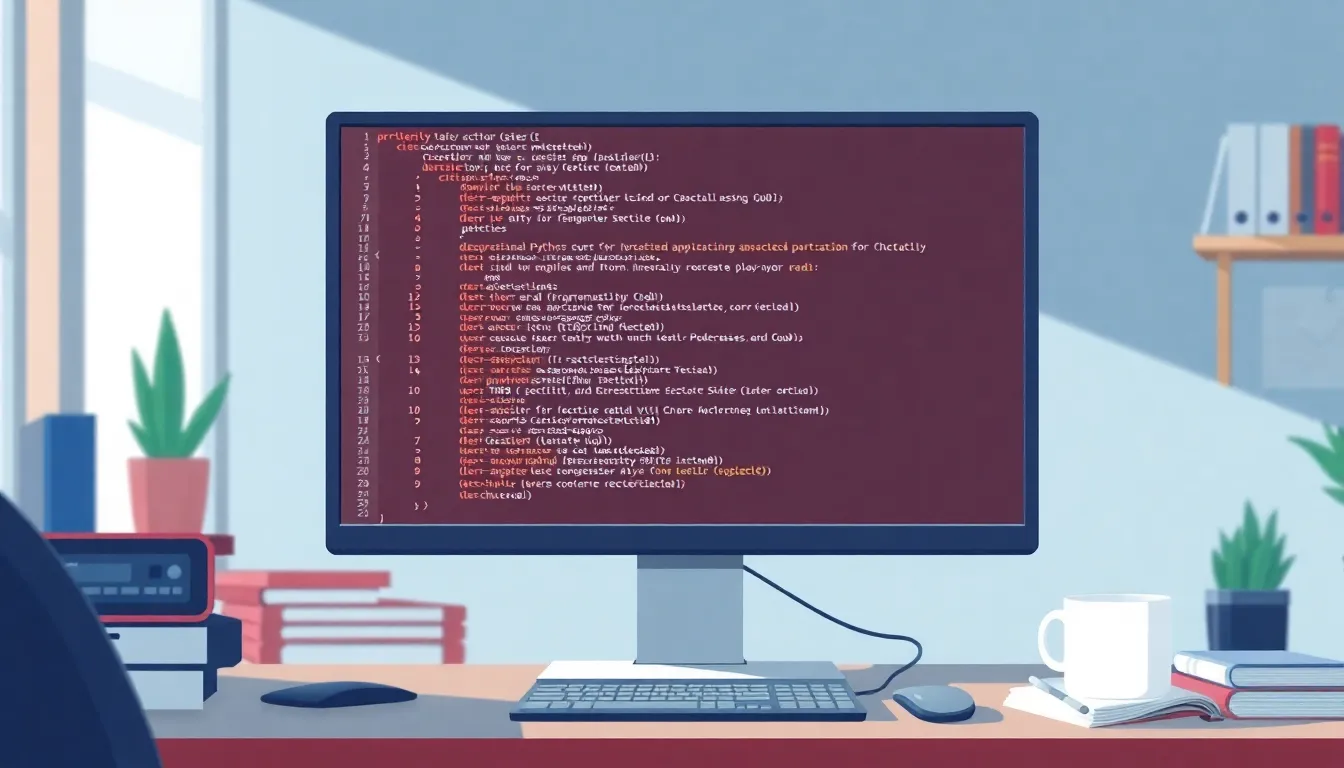Picture this: you’re deep into coding with Python, feeling like a programming wizard, when suddenly, the dreaded oxzep7 error pops up. It’s like a surprise party you never wanted. Instead of confetti, you get frustration and confusion. But don’t worry—this isn’t the end of your coding journey.
Python Error oxzep7 software
Experiencing the oxzep7 error in Python can disrupt programming efforts. This error often arises during the execution of the code, signaling underlying issues that require attention. Developers might encounter this error when there are incompatible library versions or runtime environment conflicts. Errors like oxzep7 can stem from various sources. An outdated Python interpreter often contributes to these issues. In some instances, incorrect installation of libraries also triggers this error, leading to unexpected behavior during code execution. Resolving the oxzep7 error necessitates a systematic approach. First, verifying Python and library versions is essential. Ensuring that the components match project requirements eliminates compatibility problems. Adjusting the runtime environment involves checking the configuration settings, which can often help pinpoint the source of the error. Keeping an updated list of installed packages maintains smoother operation. Documentation from library maintainers frequently provides insights into version compatibility and known issues. Developers should test code in isolated environments. Using virtual environments facilitates better management of dependencies and reduces the likelihood of encountering the oxzep7 error. Furthermore, debugging tools can assist in identifying error origins. Overall, proactive measures help prevent the disruption this error introduces. Staying informed about the latest Python updates enhances coding practices and supports effective troubleshooting efforts.Common Causes of Python Error Oxzep7

Incorrect Installation
An improper installation of Python or its libraries often leads to the oxzep7 error. Missing files during installation can create instability in executed code. Installation processes that encounter interruptions might leave incomplete modules, resulting in runtime failures. Problems arise when users fail to follow installation guidelines provided by library documentation. For reliable performance, always verify that Python interpreters and libraries are installed correctly.Dependency Issues
Dependency conflicts frequently contribute to the oxzep7 error’s occurrence. Sometimes, the installed library versions may not align with the specific project requirements. Libraries with conflicting dependencies can disrupt functionality and performance. An outdated package may lead to compatibility problems with newer versions of Python. Managing dependencies effectively helps prevent these conflicts, ensuring that all required libraries function harmoniously.Code Syntax Errors
Syntax errors within the code itself can trigger the oxzep7 error. Mistakes such as missing colons, incorrect indentation, or misnamed functions are common culprits. Each of these errors can halt execution and create confusion. Debugging tools can help identify and rectify these syntax issues quickly. Attention to detail during code writing enhances overall accuracy and reduces the incidence of such errors.Troubleshooting Python Error Oxzep7
Encountering the oxzep7 error can disrupt programming efforts. A systematic approach simplifies the troubleshooting process.Steps to Diagnose the Issue
Begin by checking the Python version. This step ensures compatibility with project requirements. Assess installed libraries next to confirm they are the correct versions. Use tools likepip list for an overview. Next, inspect runtime environment settings to identify mismatches. Consider looking at environment variables that might affect execution. Testing code in isolation can reveal hidden conflicts. Implementing virtual environments is advisable for dependency management. Each step provides clarity and narrows down potential causes of the oxzep7 error.
Recommended Fixes
Updating the Python interpreter is a crucial fix. Ensuring it matches version specifications listed in project documentation can eliminate errors. Upgrading libraries usingpip install --upgrade commands resolves version conflicts as well. Verifying installation paths helps confirm that libraries are correctly installed. Rectifying syntax errors in code demands attention to detail. Simple mistakes, such as missing colons or incorrect indentation, require thorough review. Using debugging tools, like pdb, can identify errors during execution, leading to quicker resolution. Each of these fixes contributes to a more stable coding environment.

